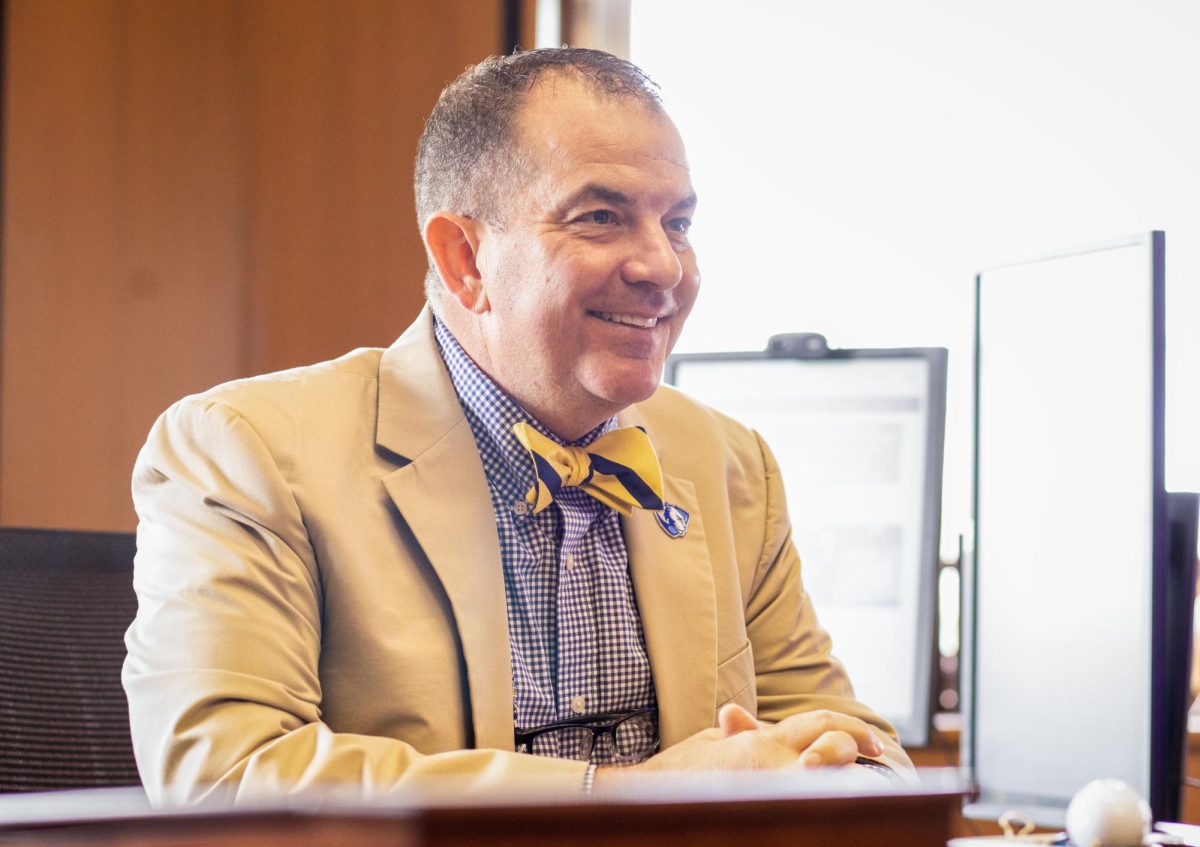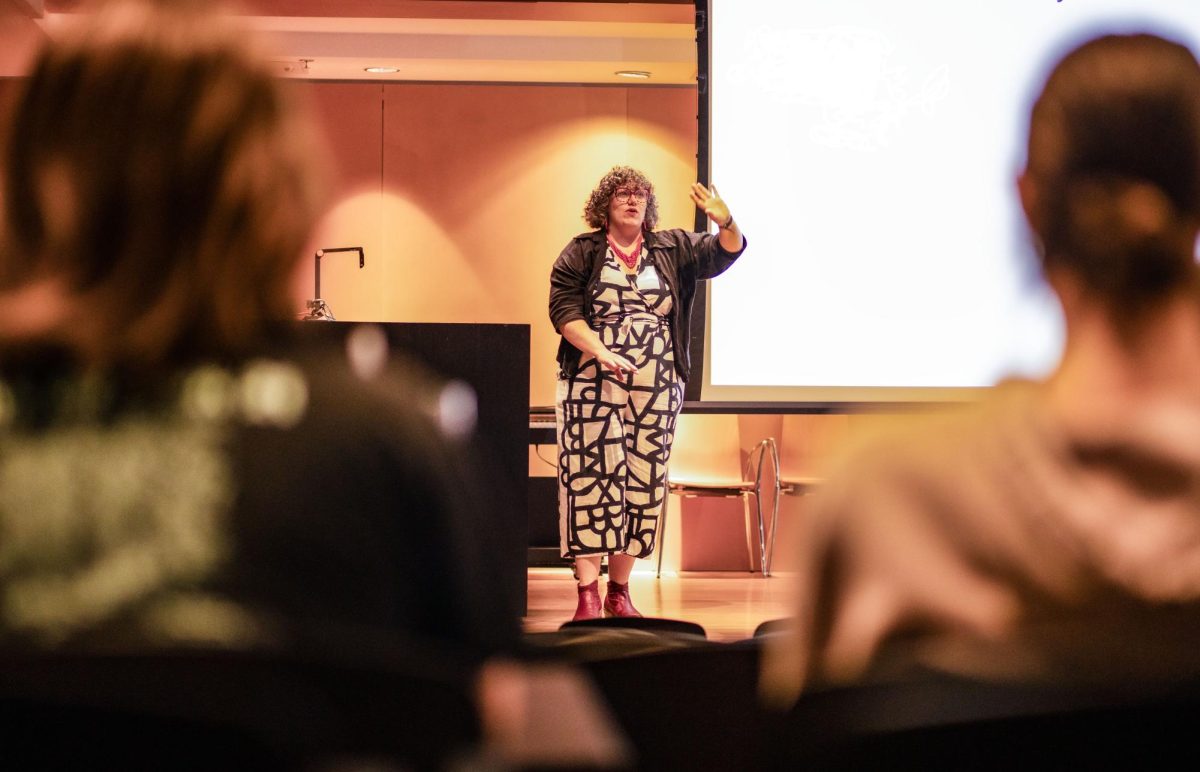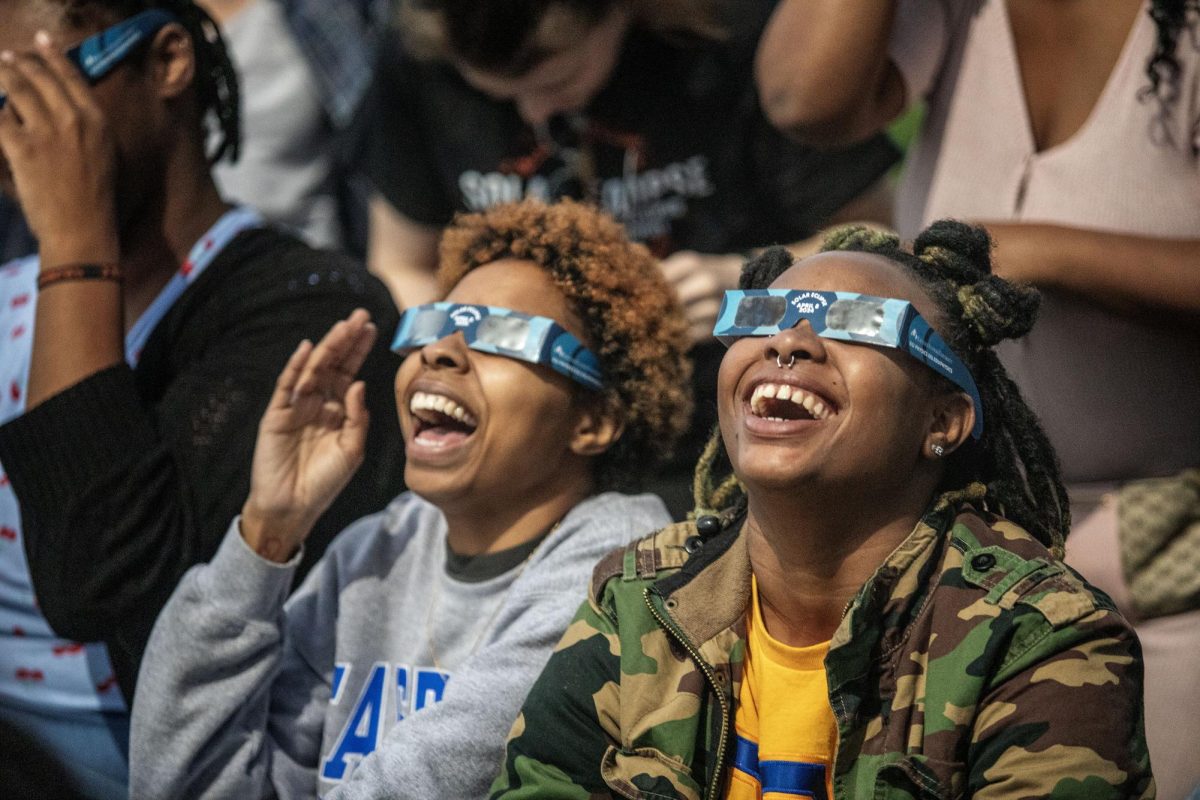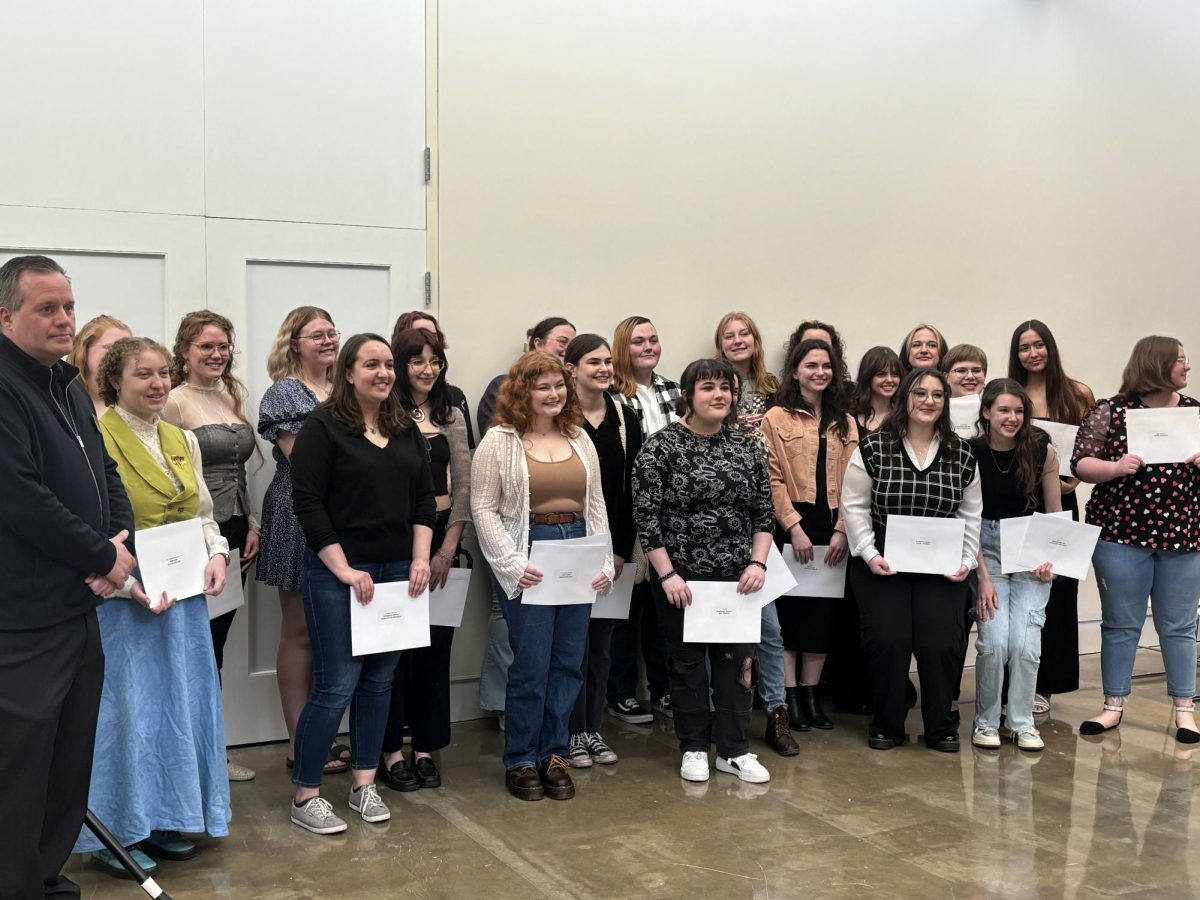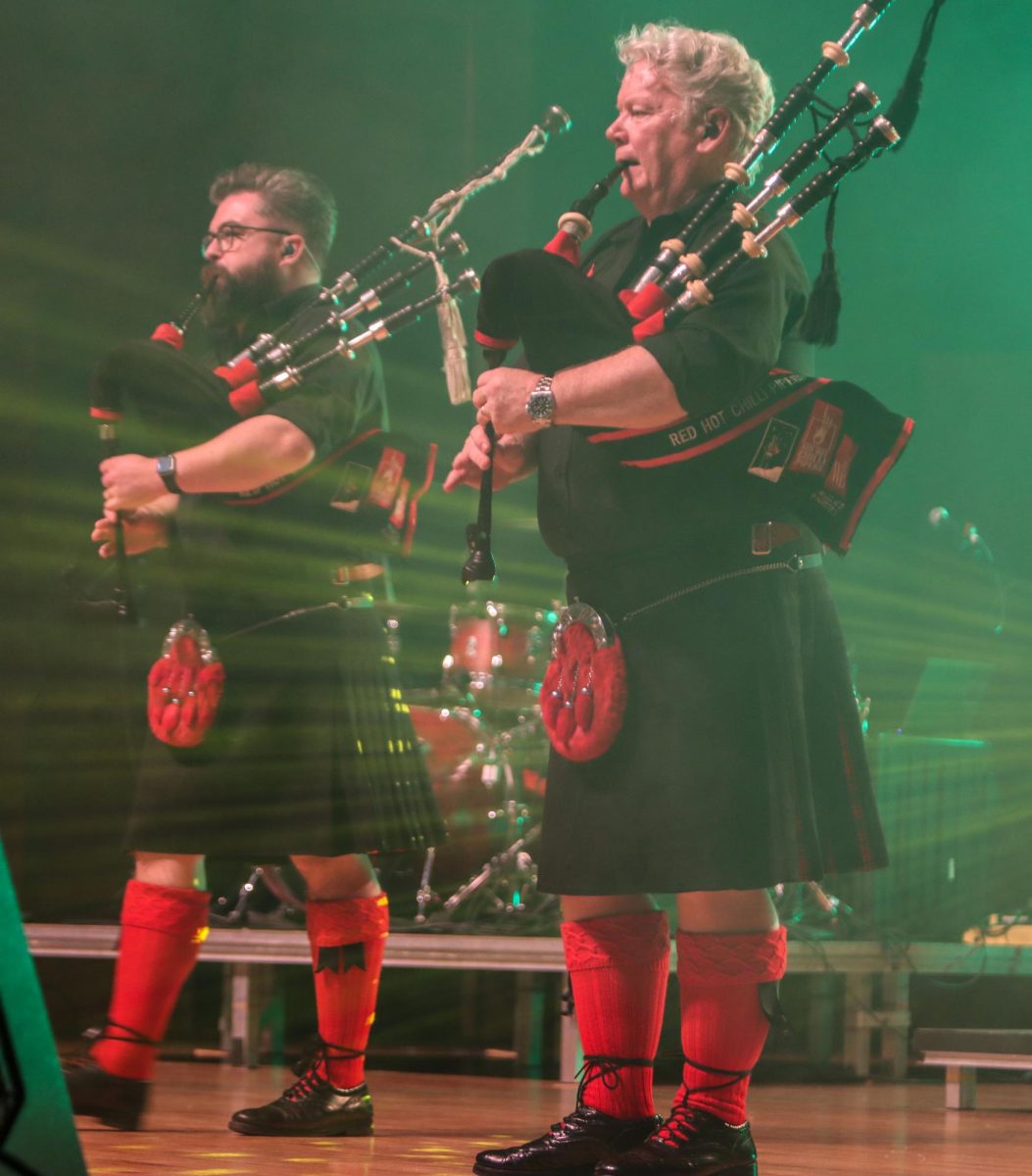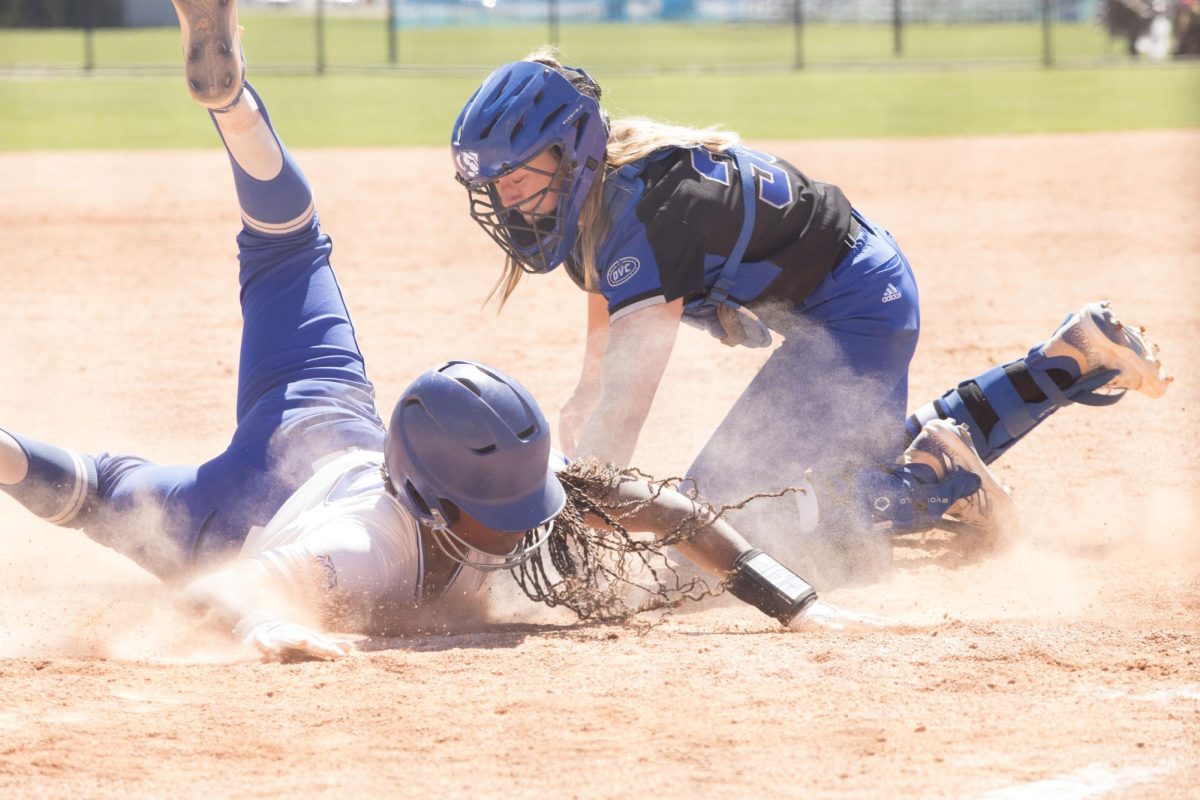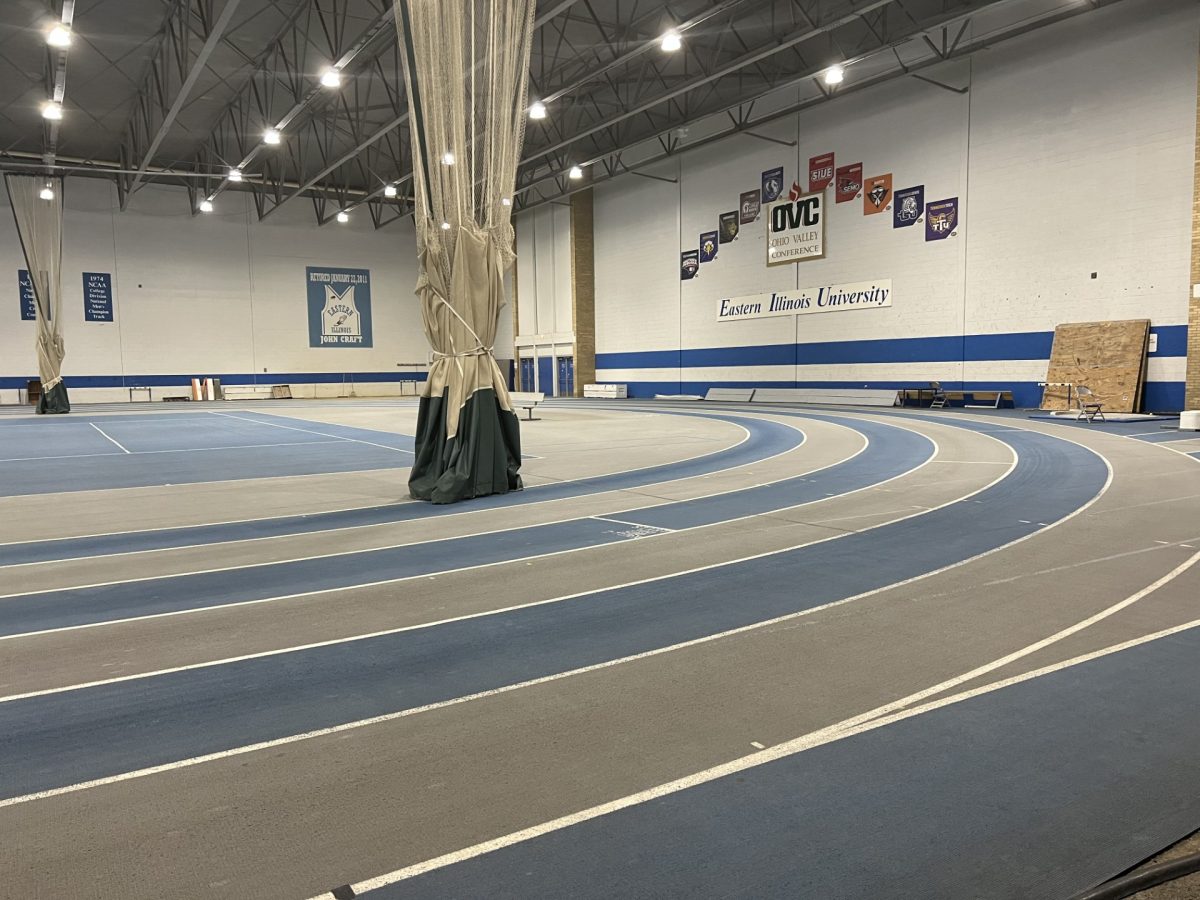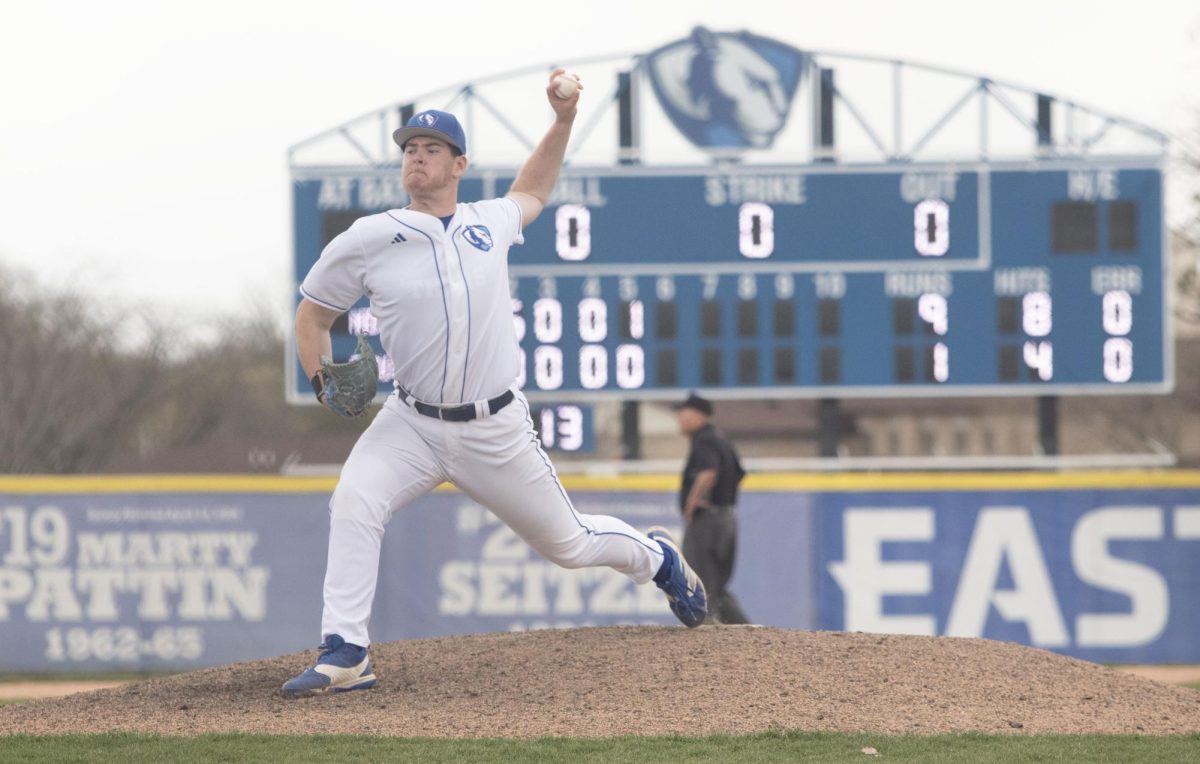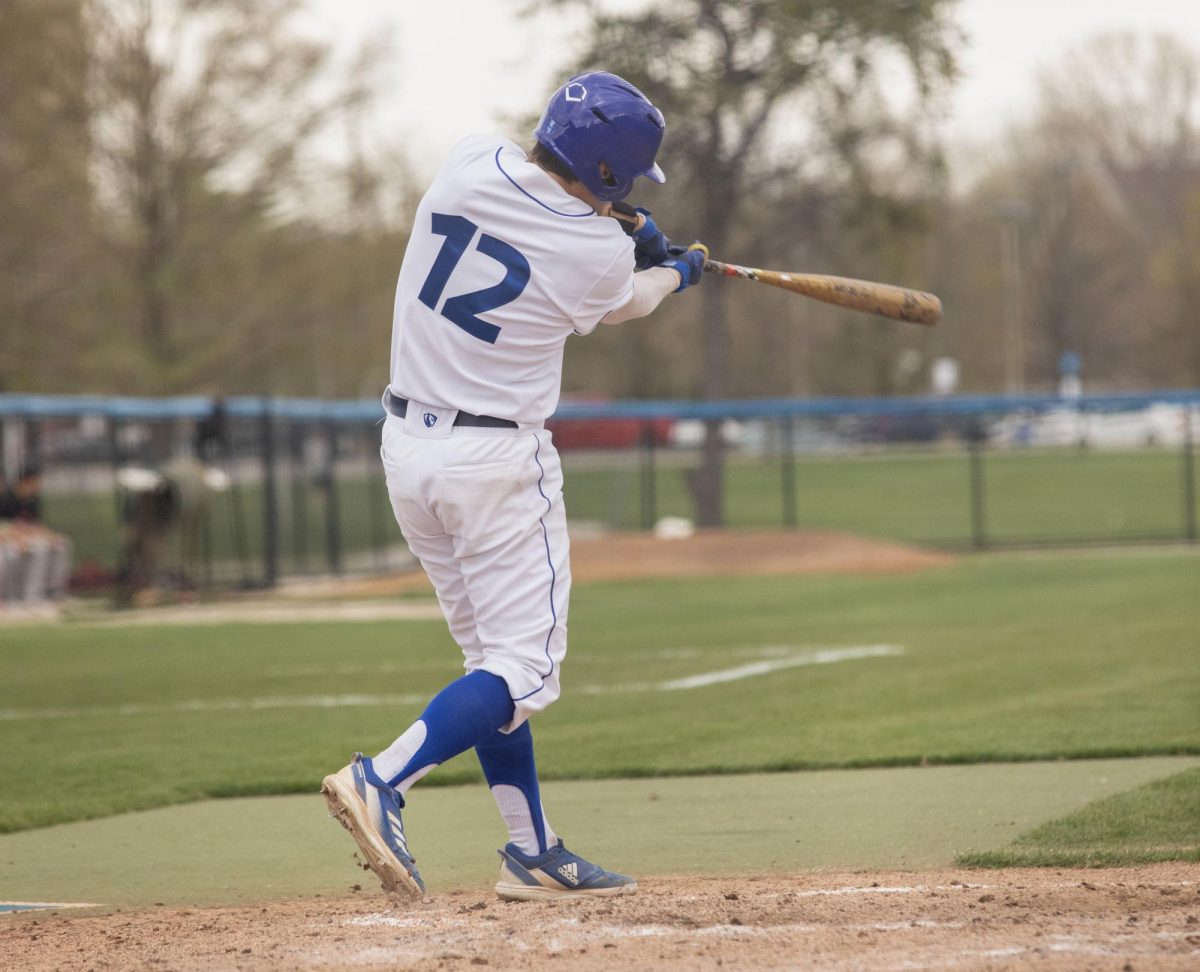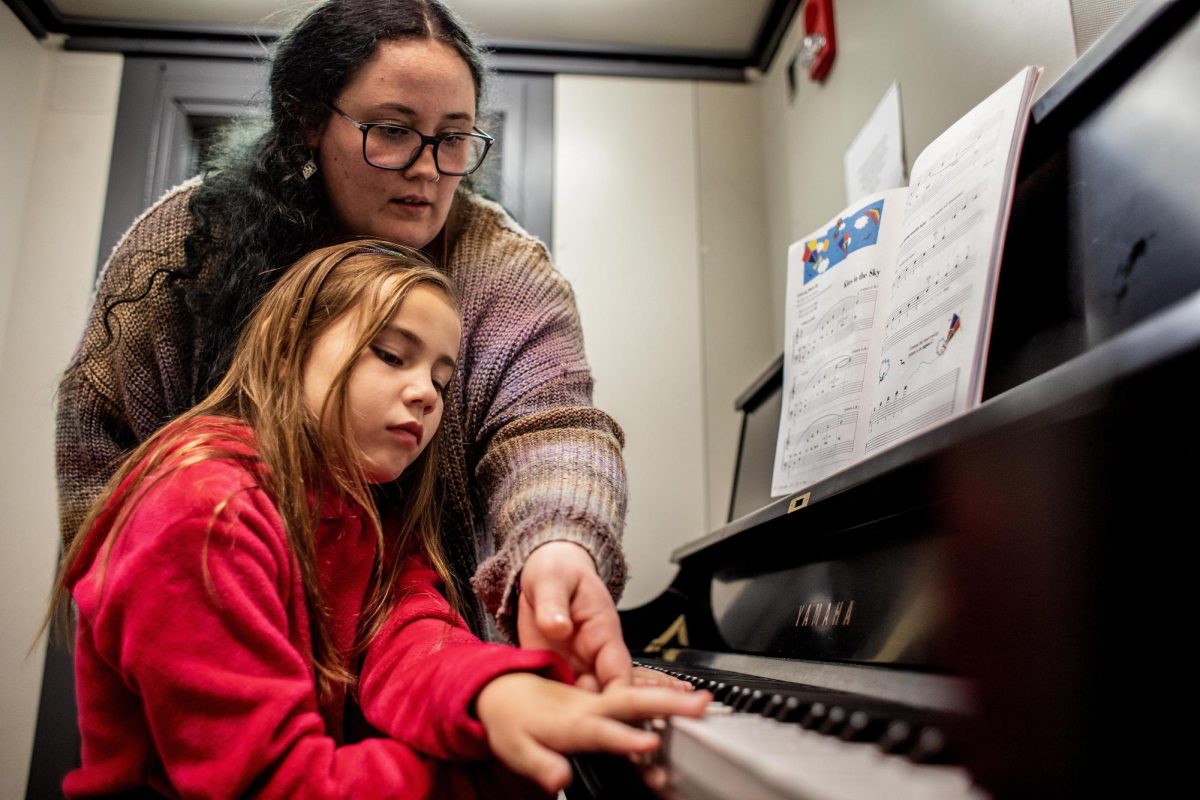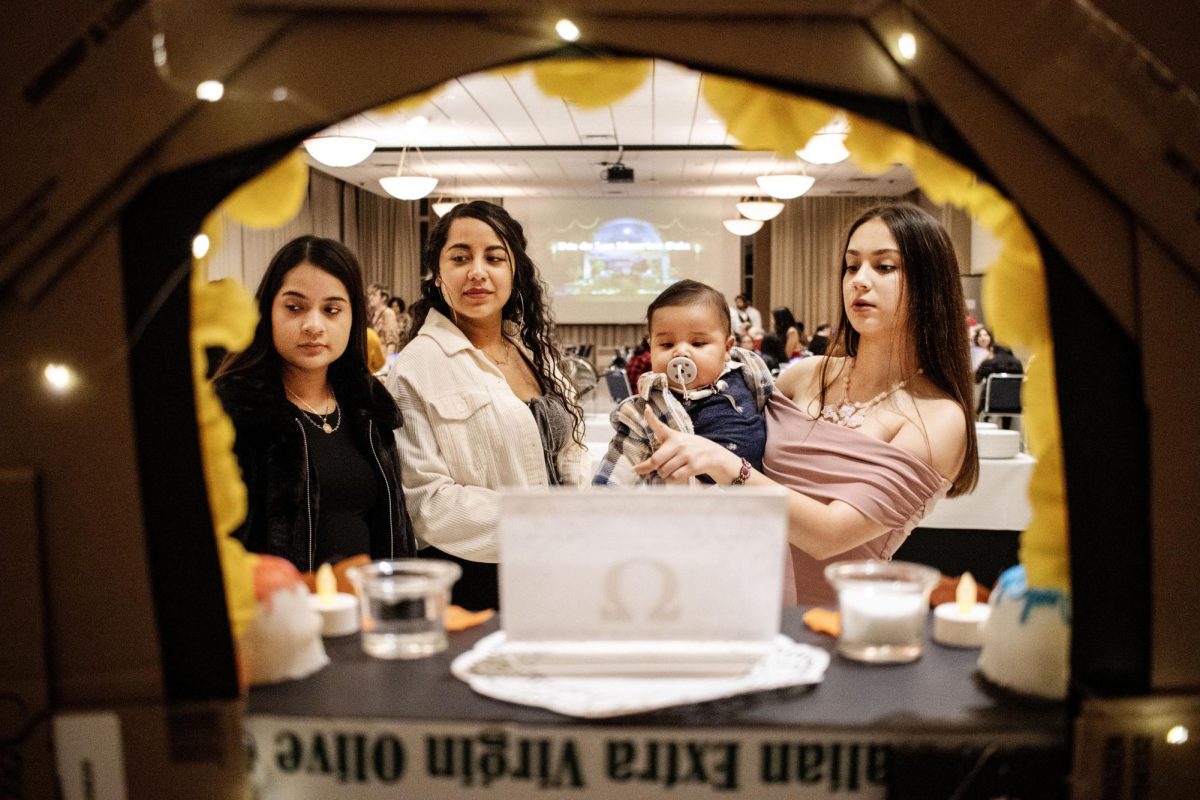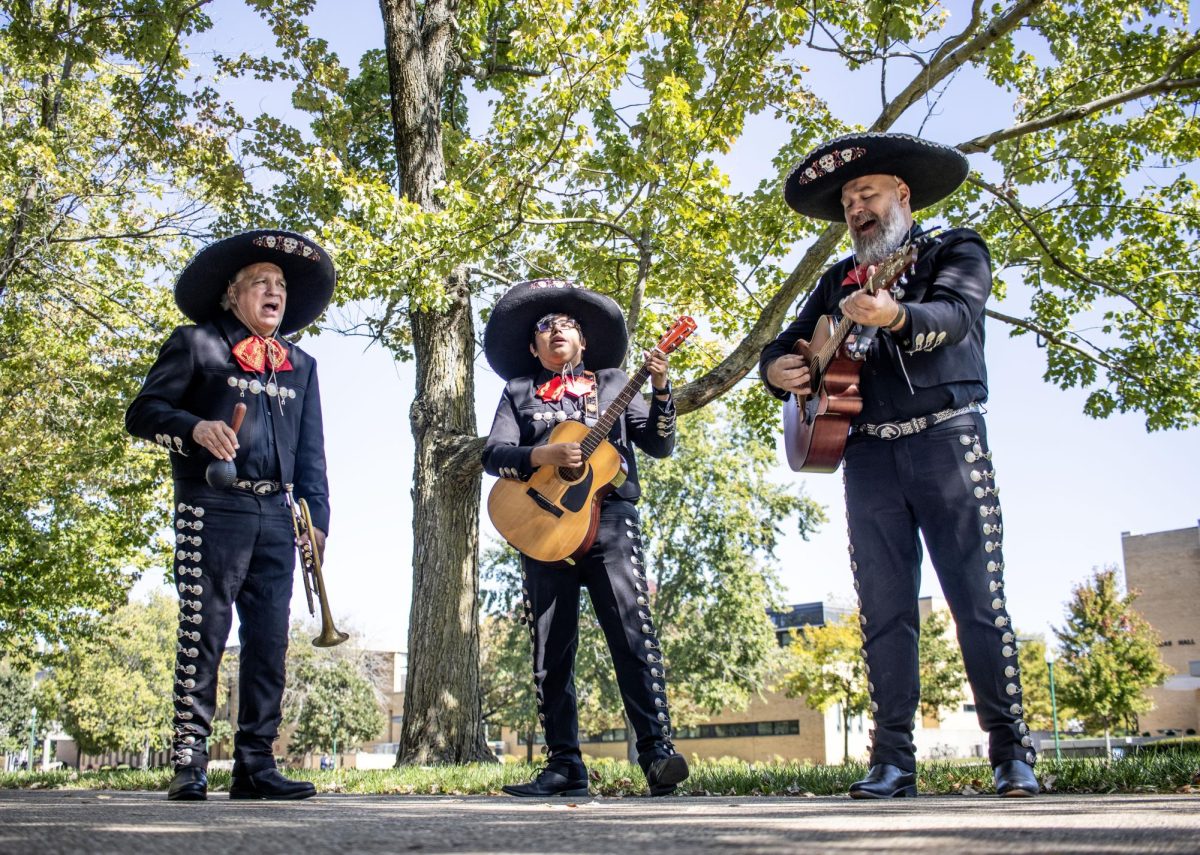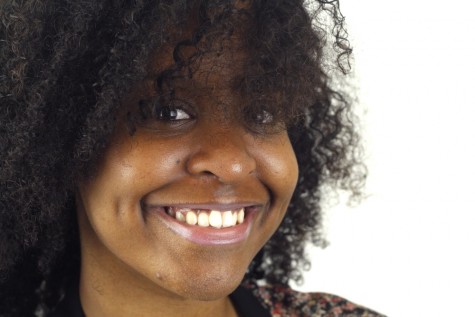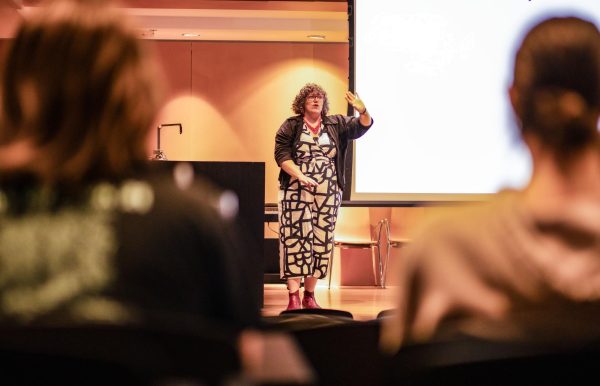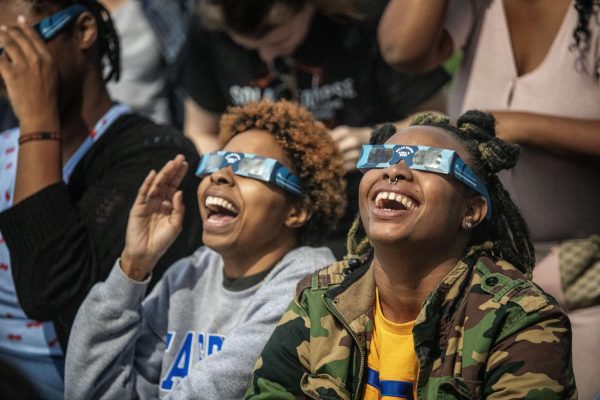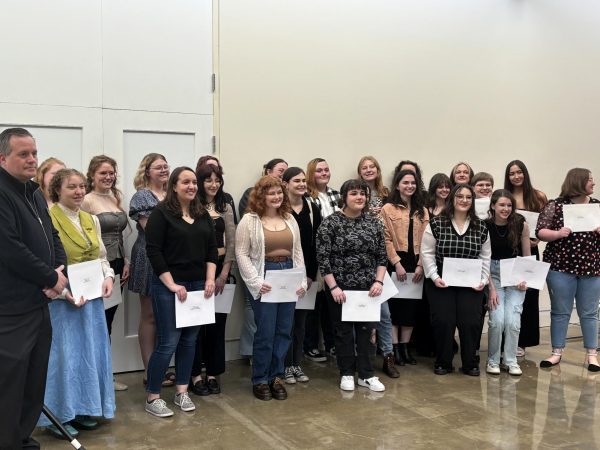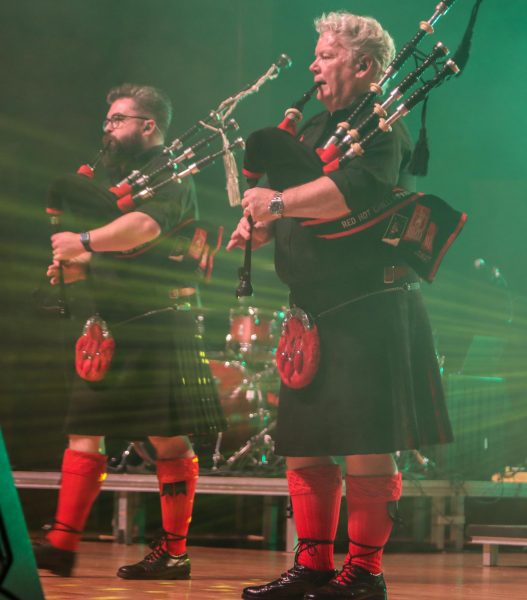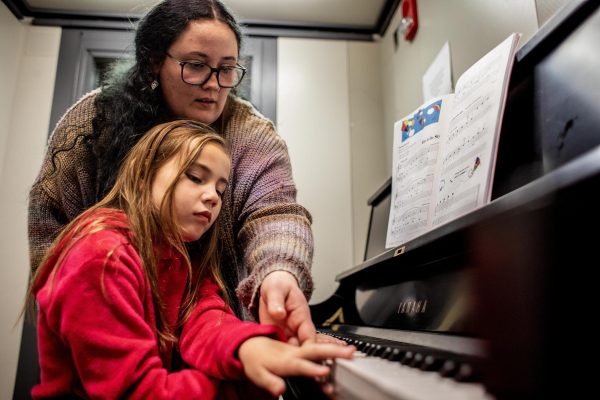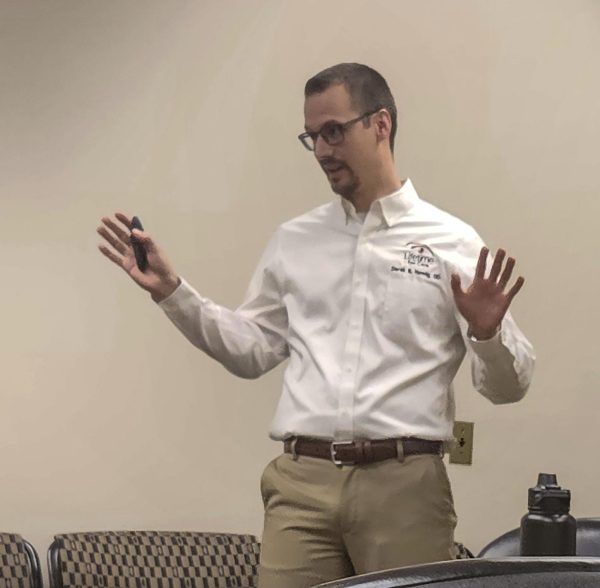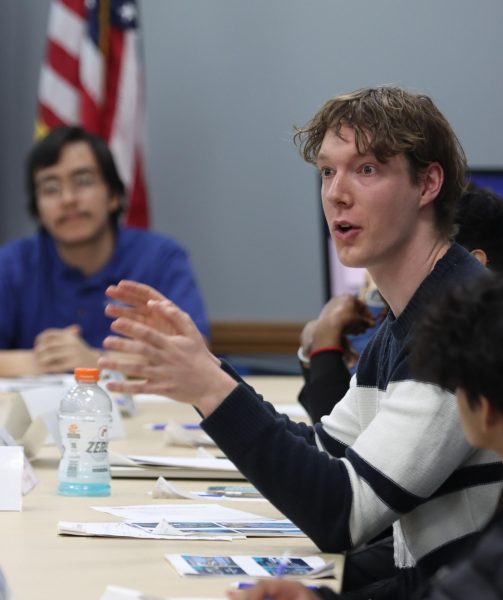Pemberton radiates legacy
October 22, 2015
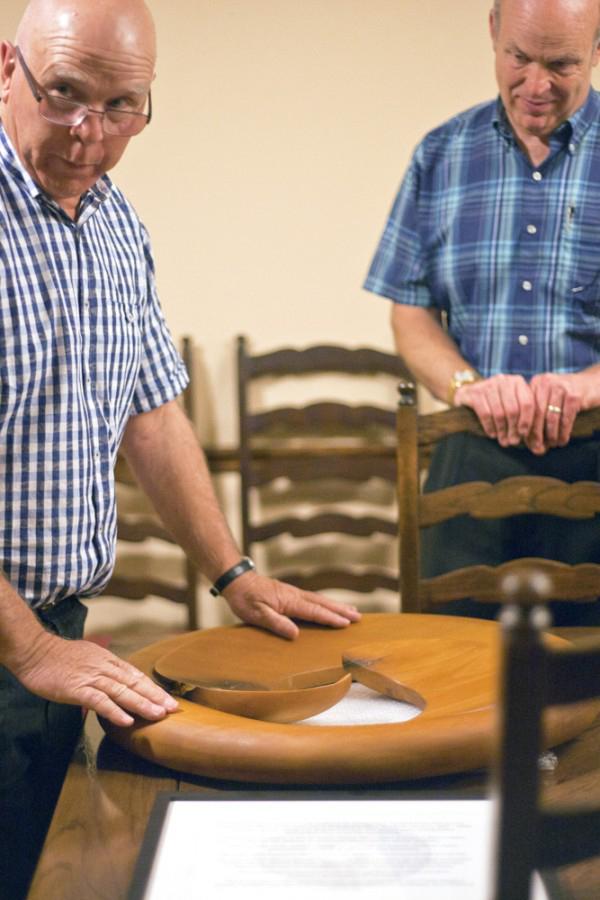
Gilbert Hawkins, the great grandnephew of Mary Hawkins, the second “matron” of Pemberton Hall explains a tree sculpture he has presented to the university Sept. 25, 2014 in Pemberton Hall.
With limestone resembling Old Main, Pemberton Hall’s history as an all-girl’s residence hall goes back to 1908, when it was built, and 1909, when it first opened its doors.
As the second building constructed in Eastern’s campus, Pemberton could be considered a historical landmark.
All historical information on Pemberton Hall is from a 2008 historical study of the residence hall done by the university.
When Eastern was a teacher’s certification school in 1899, the school’s president at the time, Livingston C. Lord, had pushed for the school to have a residence hall. At a primarily female-populated school Lord sought out a way to making being away from home comfortable.
When Lord came to what was known at the time as the Eastern State Normal School, the question of where students would stay was presented. At the time president Lord came to Eastern, Old Main was the only building standing on campus.
Mark Hudson, the director of Housing and Dining, said Lord first went to see the Board of Trustees and the state’s legislature over a span of several years to seek permission for construction of a residence hall.
“When he first went to see them, in 1900, he got sort of laughed out of the room,” Hudson said.
Hudson said part of Lord’s reasoning in persisting in the hall was to assure parents who sent their students to Eastern that their children were safe away from home. It took Lord four tries to get the idea through the system. When he got it through, the governor vetoed the proposal.
“This is really an interesting story about how perseverance really pays off,” Hudson said.
In 1906 Lord finally got permission to build a hall for students of the university. The building was built in 1908 and eventually opened its doors on Jan. 1, 1909.
It was the first residence hall built at a state university in Illinois.
Hudson said Lord enlisted in help from a man named Stanton Pemberton, who was a state senator from Oakland.
“It was (Stanton’s) help in the political process that got it passed, so that’s why president Lord recommended it be named in his honor.”
Over the past years, Pemberton has made additions to accommodate to the continually changing world. At first Pemberton had 100 beds. In 1963 renovations were made to modernize the dorms on the northern most side of the building and 100 more beds were added. Along with additions came subtractions; in 2001, Pemberton closed its dining center.
“There wasn’t enough traffic to keep Pemberton’s dining center working,” Hudson said. “Regardless of if you sold 100 meals or 500 meals you have to have a number of staff to do it, and it became too expensive.”
Hudson said another problem was many students in the South Quad hardly made it to Pemberton. It was also a rule implemented which caused for students to only eat in the residence hall they lived in, so only Pemberton residences could eat in Pemberton.
What students now call the Honor’s college, back in the day, was called the “Cracker Box Gym,” which was built as a part of Pemberton’s original building. Pemberton used to also house the Daily Eastern News and a textbook rental space.
Last year Gilbert and Annette Hawkins came to present Pemberton with a good luck present. It is a piece of wood mounted in Pemberton’s foyer from a 40,000 tree in New Zealand.
Gilbert Hawkins is the great grandson of Mary Hawkins who was one of Pemberton’s first hall directors.
Mary Hawkins was a hall director from 1910 to 1917; the family came to pay their respects to the former director who is now buried in the Charleston cemetery.
Miranda Haywood, a junior family consumer science major, is the current president of Pemberton, and said she recalled a time when a former resident came to the hall and thought back to past years.
Haywood said an older woman came to visit and asked where the “passion pit” was. Haywood guided her to the area the woman described. It is where residents now wait for the Panther shuttle.
“Boys weren’t allowed in the building, so that was where they would go and make-out before they sent the boy away,” Haywood said.” They used to have a curfew, and if they got three or five points for bad behavior they would be grounded.”
Haywood also said that at the dining halls residents had to wear formal attire; they would come dressed in their Sunday best at the scheduled meal times. If people were late, they would miss the meal.
Haywood said residents would also tan on the roof of the third floor. Hudson said on Pemberton’s fourth floor used to be an infirmary where there was a working nurse.
“For me, Pem wasn’t even in my top three because they don’t have A/C,” Haywood said. “But ever since I haven’t pictured myself living anywhere else.”
Hudson said he is thinking of putting air conditioning in Pemberton.
“It’s a million dollar plan, but who has a million dollars?” Hudson said.
Claire Doiron, a desk assistant at Pemberton, said she loves the homey feel Pemberton radiates.
“I like the styles of the rooms,” Doiron said. “ And it makes me proud to have people come in, totally in awe and compliment how neat our hall is.”
Hudson said Pemberton holds the highest retention rate; for the most part once people move there, they do not move out.
T’Nerra Butler can be reached at 581-2812 or [email protected]


